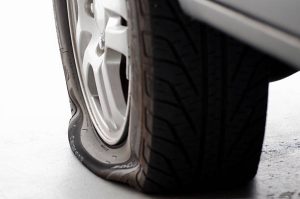For all drivers, being how to change a tire is a necessary skill. There’s always a possibility you’ll forget to charge it, run out of battery life, or leave it at home if you rely on your cell phone to get you through a roadside emergency. Anywhere can have a flat tire, and using a cell phone won’t make you a better tire changer.
Fortunately, replacing a tire isn’t that difficult. Simply follow the advice below to be ready in case you have a flat.
If any of these items are missing from your car or if they weren’t included when you bought it, you should buy replacements straight soon. Additionally, make sure you regularly inflate the spare tire to the PSI that the vehicle’s manufacturer recommends. Every time you check the air pressure in your other tires, you should also check the spare. Always check your tire pressure each month, especially before lengthy travels or when carrying extra weight.
In case you need to change a flat tire, keep the following items in your glove box or trunk even though they don’t come with your car:
1. CHOOSE A SAFE AREA
Do not suddenly brake or turn when you first notice you have a flat tire. Slow down and look about for a straight, flat section of road with a wide shoulder. The best location would be a parking lot that was empty. It is advantageous to have level terrain since it will keep your car from rolling. Furthermore, straight sections of road are preferable to curves since they increase the likelihood that incoming vehicles will spot you.

Never try to replace a tire near oncoming traffic on a small shoulder. Move forward (slowly) until you reach a safer location. Although driving on a flat tire puts your rim at danger of damage, this is better than getting struck by an inattentive motorist.
Make sure to review the specific instructions for changing a flat tire for your vehicle in your owner’s manual.
2. SWITCHING ON YOUR WARNING LIGHTS
Your danger lights, often known as flashers, will make you more visible to oncoming traffic. They should be turned on as soon as you recognize you need to stop in order to prevent an accident.
3. APPLY THE WHEEL CHARGES
To further assure that the car won’t roll while you patch the flat tire, use wheel wedges in front of or behind the tires. Put these in front of the front tires if you’re changing a rear tire.
Large stones or bricks can be used in place of “genuine” wheel wedges. Make sure they are substantial enough to prevent the automobile from rolling.
4. TAKE OFF THE WHEEL COVER OR HUBCAP
It’s simpler to take off the hubcap before raising the car with the jack if your car has one covering the lug nuts. For instructions on how to remove a hubcap or wheel cover properly, go to your owner’s handbook.
5. PUT THE JACK UNDER THE CAR
Under the car’s frame, next to the flat tire, is normally where the jack should be placed. A cleared piece of exposed metal on the bottom of many car frames is designated for the jack and is covered in molded plastic. Follow the jack positioning directions in your vehicle owner’s manual to properly raise and prevent damage to the car.
6. USE THE JACK TO LIFT THE VEHICLE
Before attempting to elevate your vehicle, insert a small cut of 2×6″ wood beneath the jack to keep it from collapsing under the weight of your car and losing equilibrium. On asphalt, this strategy is very useful.
Lift the car with the jack in the right place until the flat tire is roughly six inches off the ground.
Never place any portion of your body under the car while it is being raised with the jack or later.

7. REMOVE THE FLAT TIRE
Once the tire is entirely free from the hub behind it, slowly pull it toward you while holding it by the treads. To prevent it from rolling away, position it on its side.
8. FIT THE SUPPLEMENTAL TIRES TO THE LUG BOLTS
By aligning the rim with the lug bolts, insert the spare tire on the hub.
9. LOCK THE LUG NUTS AGAIN AFTER LOWERING THE VEHICLE.
Lower the car using the jack so that the spare tire is on the ground but that the tire isn’t bearing the entire weight of the car. Now, using the wrench and rotating in a clockwise direction, tighten the lug nuts as much as possible. Use your entire body weight to press down on the lug wrench.
10. COMPLETELY LOWER THE VEHICLE
Remove the jack and fully lower the car to the ground. To make sure the lug nuts are as snug as possible, give them one more tug with the wrench.
11. CHANGE OUT THE HUBCAP
Put the hubcap you removed from the flat tire back on if it fits your spare tire after first removing it. When you store your equipment, store it with the tire if it won’t fit.
12. STOW EVERYTHING
A jack, a lug wrench, wheel wedges, your flat tire, and perhaps a hubcap are the items you have in front of you. Don’t forget to load them all into your car before you go.
HOW LONG DOES A FLAT TIRE REPAIR TAKE?
To make sure you are equipped to manage this circumstance should it ever arise for you, it is helpful to practice changing a tire in your garage or driveway.
